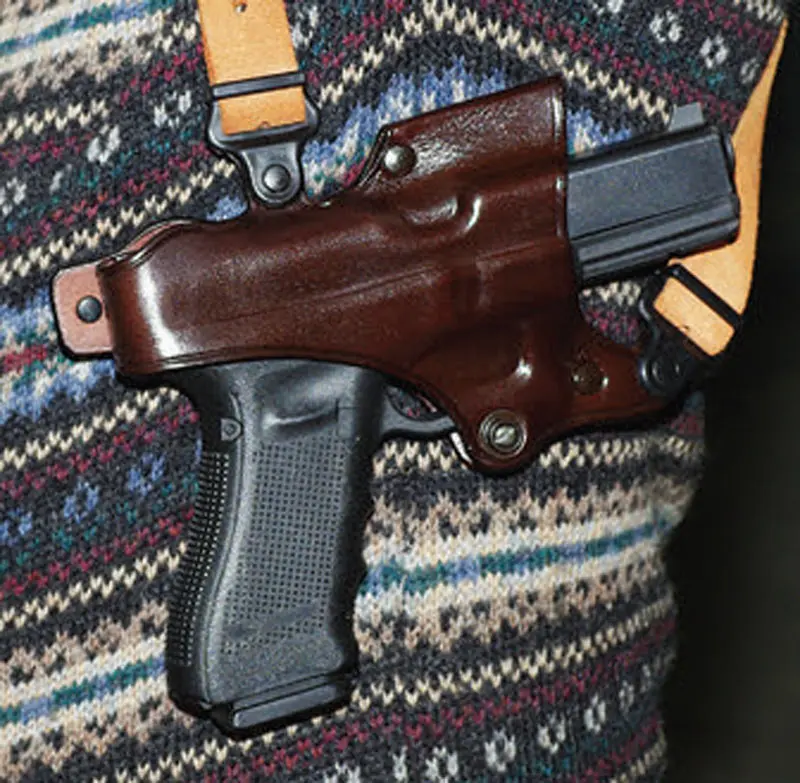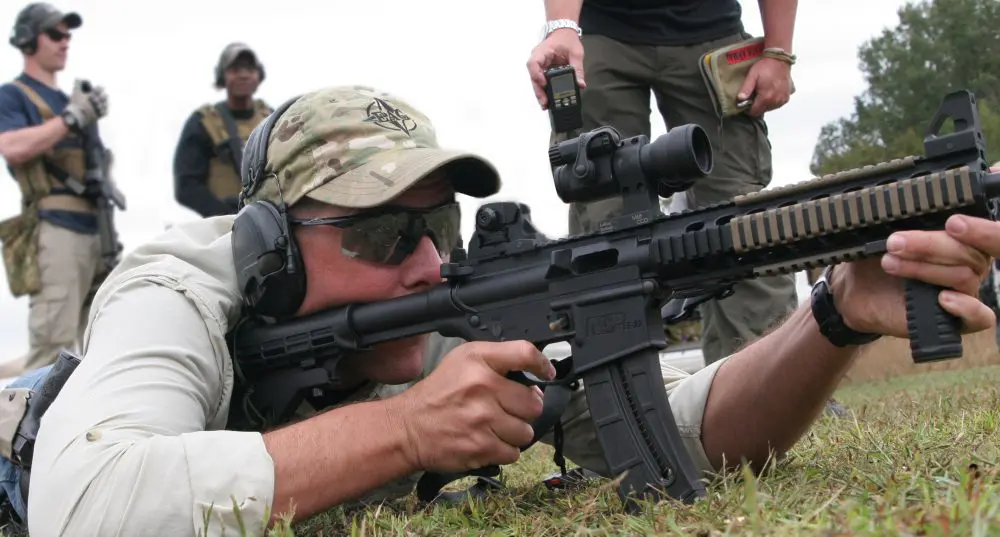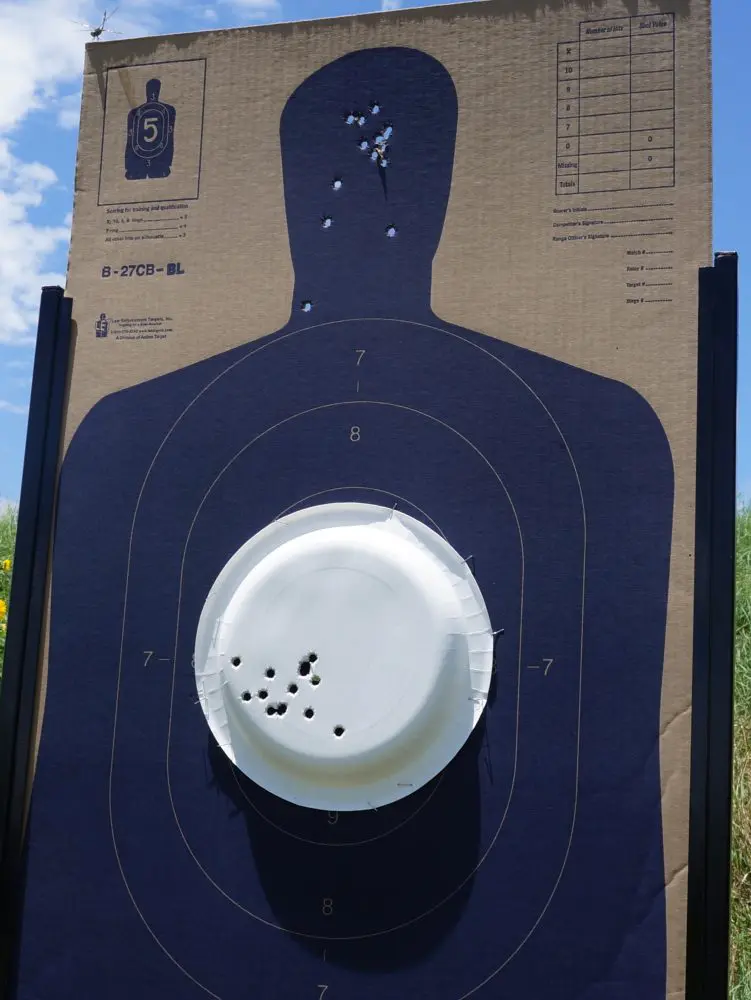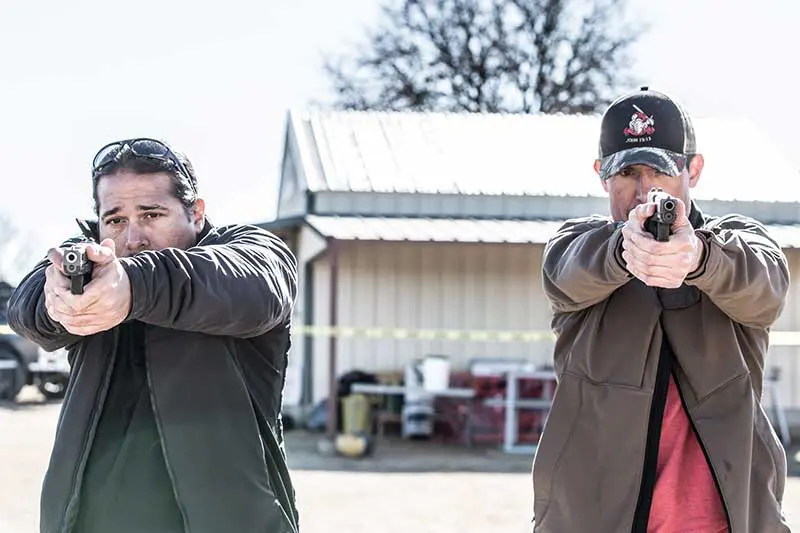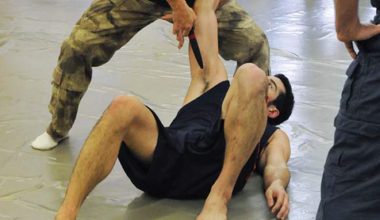Legendary gunfighter Jim Cirillo is well-known for, among other things, popularizing what he called the “New York Reload.” In his days on the New York City Police Stakeout Unit in the late 1960s, Cirillo would always carry at least two, and sometimes three, handguns on the theory that, if his first handgun went dry in the middle of a protracted affray, it would be simpler, easier and faster to simply dump that gun and grab another fully loaded spare than to reload the first gun.
However, Cirillo was using revolvers in an era when speedloaders didn’t yet exist. While in the modern world speedloaders have eased the task of reloading a revolver considerably, I would say that, given an average skill level, the New York Reload is still a superior alternative to reloading the main gun—if you’re shooting a revolver.
I have wondered for some time how the New York Reload would compare to simply reloading the main gun if it’s a semiautomatic pistol. I decided to find out.
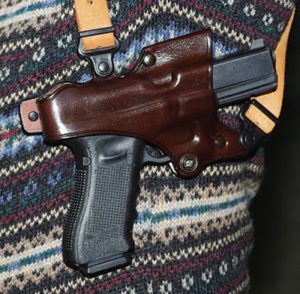
Table of Contents
ORIGINAL JACKASS RIG
Let’s discuss equipment. For years I have been fascinated by the Galco Original Jackass Rig (OJR). The first design from the old Jackass Leather Company (today known as Galco International) is, in my opinion, still the best of the horizontal shoulder holsters and the only shoulder rig I can wear at all comfortably.
I was interested in the fact that Galco makes both left- and right-hand versions of the OJR for any gun type for which it’s available, and it is not at all unknown for people to order double shoulder rigs, with mirror-image holsters holding identical guns, one on each side.
If you ask me, that’s a darn interesting concept. The idea of the double mag pouch on the off side that comes standard on a horizontal shoulder rig is that it will balance the weight of the gun on the other side. However, it really doesn’t. The gun still weighs signifi – cantly more than two spare mags. But if you went for a double shoulder rig with the exact same gun on each side, there would be no difference—the rig would balance perfectly.
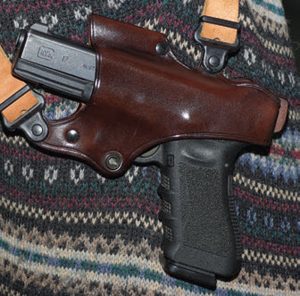
It’s also worth noting that with the “carrying two duplicate guns” approach, you not only always have a backup gun with you, but your backup is not some teeny little popgun with an operating system completely different from your main gun.
While discussing this project with the friendly folks at Galco, they mentioned their HCL (Horizontal Carrier Leather) mag pouch. The traditional mag pouch for a Galco Original Jackass Rig is an upside-down snapped-and-flapped double pouch. I can tell you from personal experience it’s not the fastest thing in the world from which to do a speedload. But the HCL is a horizontal mag pouch. Well, if you want to be exact, it’s diagonal, not horizontal, in that the magazines slant upward slightly, at least the way I set up the rig.
It has no snaps but is just open topped, or rather open-sided to the front, and relies on a friction fi t to retain the mags. This makes it immensely faster to draw from than the traditional OJR mag pouch.
Galco does not offer the HCL as part of their OJR. It’s a part of their Miami Classic system. The only way this matters is that the OJR is not offered in black. Its darkest color is a deep Havana Brown. Conversely, the Miami Classic is not available in Havana Brown; its darkest color is black. So while the possibility to mix and match holsters and mag pouches is there, and marry an HCL mag pouch to your OJR holster, they’ll wind up two slightly different colors: very dark brown on one side and black on the other.
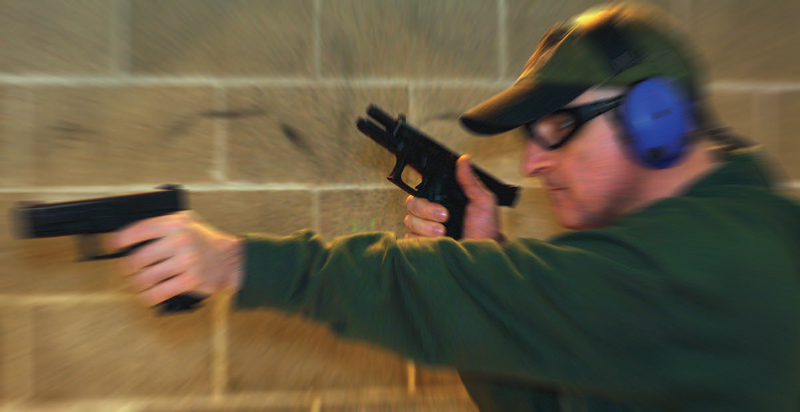
TEST GUNS AND GEAR
For this test, Galco sent me two complete rigs: one OJR double outfit set up for a Glock on each side, and another with the OJR on one side and HCL mag pouch on the right. Guns used were two Glock 17s: my current Gen-4 carry gun and my old Gen-3 carry gun.
If using a double shoulder rig, think hard about the gun to be carried in the off side holster—specifically if you’re right-handed whether the gun has a non-reversible or ambidextrous magazine release button. Carrying such a gun in a left-hand shoulder holster (or a left-hand belt holster) will expose your magazine release button to life’s hard knocks instead of shielding it between the side of the gun and your body, as occurs when a “right-handed” gun is carried in a right-handed holster.
My old Gen-3 G17 has had installed an extended magazine release button that caused me absolutely no problems over years of carrying the gun concealed on a daily basis in a right-hand on-thebelt holster. The left-hand shoulder holster was an entirely different matter. Several times I found myself accidentally depressing the magazine release button and popping out the mag while reinserting the gun into the holster. Even a short stock button would have been dangerous in this regard.
Also it’s not farfetched to think that one day something might be able to depress the magazine release button while the gun is in the left-hand shoulder holster and concealed, which would lead to a loaded magazine suddenly spitting out from under your concealing garment and into the open. Not what we call discreet.
I’ve wondered how a New York Reload from a shoulder rig would compare to wearing both guns on the belt, one on the strong side, with a mirror-image holster on the support-hand side.
Fortunately I own a Blade-Tech lefthand holster for the Glock 17, so I just threaded that onto my belt, replacing my typical Blade-Tech double mag pouch for this testing.
How much difference would it make if you drew the gun with the support hand and simply left it there and fi red one-handed versus transitioning it over to the master hand and fi ring with your standard two-handed grip (known as the Border Shift)? How much difference would it make if we did a slide forward reload, before the gun ran dry, from the HCL versus waiting until the gun ran to slide lock? Finally, how would all this— New York Reload, shoulder holster, HCL mag pouch— compare to simply doing what most people do, which is have a mag pouch behind the off side hip and reload from that? Slide forward and from slide lock.
SKILLS TESTED
Finally my test program expanded to include eight different skills—four different draws and four different reload techniques—measuring with an electronic timer the intervals between my last shot before the reload and my first shot afterward.
For draws I had:
- New York Reload, draw second gun from off side holster on Galco OJR shoulder rig, fi re one-handed while keeping gun in left hand.
- New York Reload, Galco OJR, draw with left hand, Border Shift gun to right hand, continue fi ring two-handed.
- New York Reload, Blade-Tech belt holster, draw second gun with left hand, continue fi ring with left hand.
- New York Reload, belt holster, draw with left hand, Border Shift gun into standard two-handed hold.
With reloads I had:
- HCL mag pouch, slide forward reload.
- HCL mag pouch, slide lock reload.
- Belt pouch, slide forward.
- Belt pouch, slide lock.
All eight skills were tested from concealment, with the equipment covered by a baggy green hoodie I wear on a regular basis. I did five reps of each drill and averaged the results. My data is included in the accompanying table so you can come to your own conclusions.
Before we get into my conclusions, I might mention that, although I did practice all these techniques before heading to the range, the only ones I’d done a lot of previous practice with were reloading from a belt pouch, both with the slide forward and from slide lock, which may have given those techniques an advantage over the other methods.
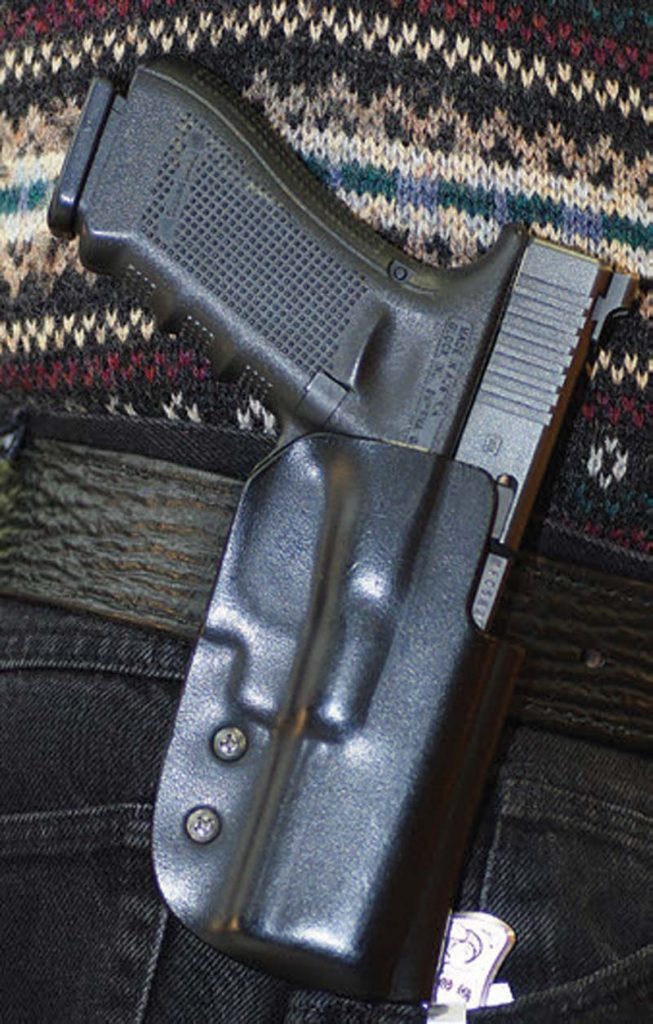
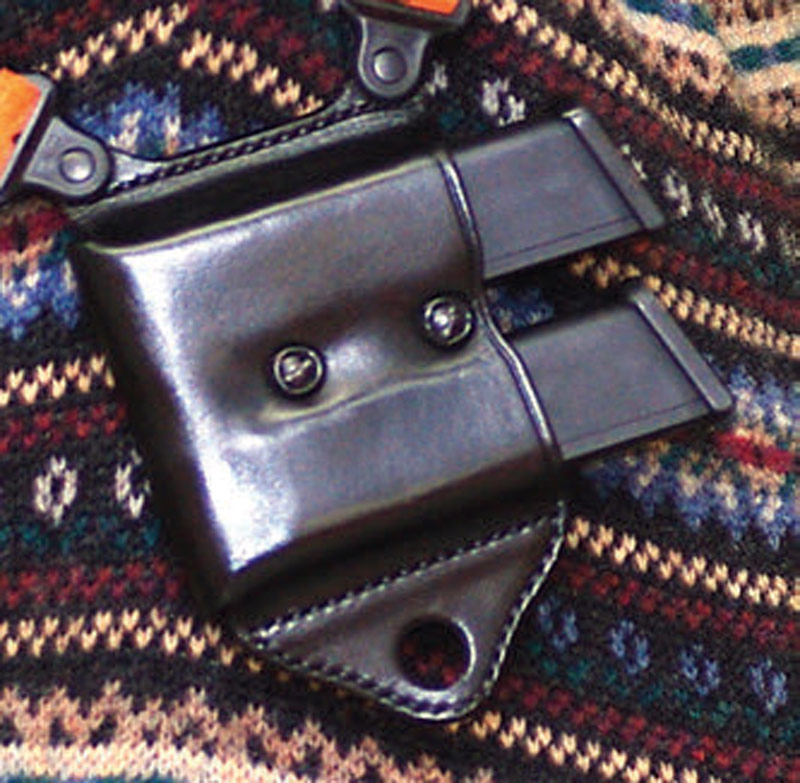
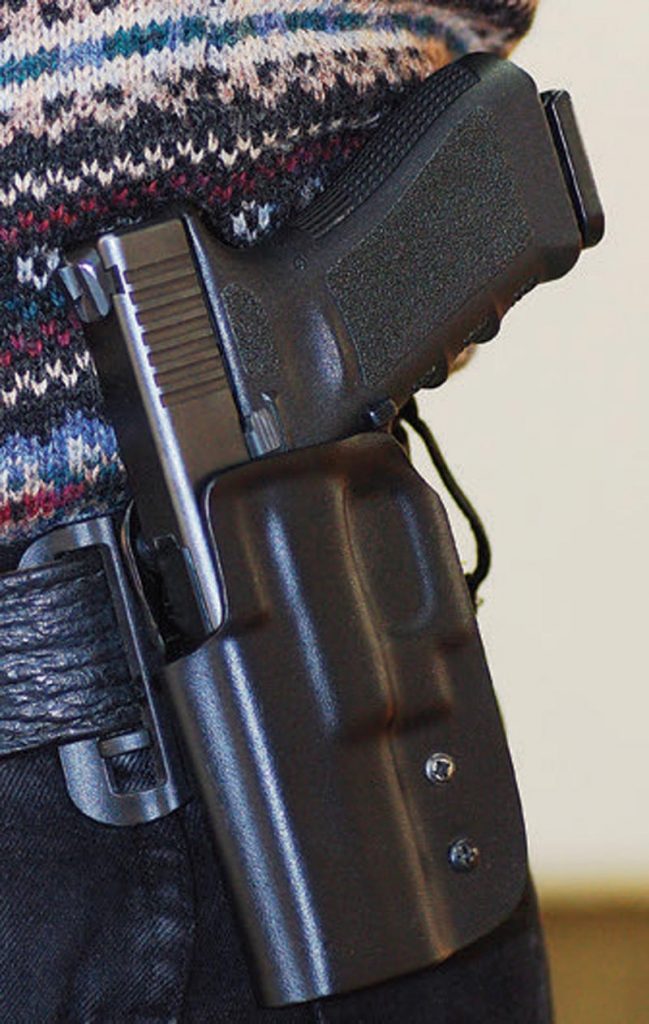
RELOADS
Let’s begin with the reloads. To no one’s surprise, the single fastest way to get a fresh magazine into the gun and continue fi ring (1.95 seconds) was to simply speedload the gun from a belt pouch with the slide forward—all those generations of competition shooters weren’t wrong.
Surprisingly—at least to me—in second place was doing a slide forward reload from the HCL mag pouch with an average speed of 2.13 seconds—only .18 second slower than loading from the belt. Frankly, I hadn’t expected the technique to work that well because, practicing with and thinking about it before doing it live fi re, it seemed a much less directional technique than speedloading from the belt.
Going from the belt, your hand goes down and comes back up in two big, essentially straight movements. With the HCL, you have three movements: over to the HCL, out to align the mag with the mag well, then up to seat, in a sort of sideways “L” movement.
But what I found when executing the technique was that, although the movements necessary to reload from the HCL are somewhat more complex than a belt load, the distance between the mag pouch and the gun is considerably less, which erases the potential speed difference. With dedicated practice, I might be able to get my HCL load faster than my belt load.
In third place was reloading from the belt after shooting the gun to slide lock (2.26 seconds). The process of hitting the slide lock to get the slide forward after inserting the fresh mag, in my hands, added not quite a third of a second versus a simple speedload from the belt.
In fourth place, and by no means contemptible, was the HCL with a slide lock reload speed of 2.57 seconds. Here I saw a bit more speed differential— slide forward versus slide lock—with the HCL than when loading from the belt (a .31-second difference). That’s because, when loading from the belt, I angle the gun over to point it at the mag pouch and align it to receive the mag. This also exposes the slide release to my thumb for easy depression. With the HCL, by contrast, I leave the gun much more vertical, so I can insert the magazine straight up into the mag well, which makes it a bit slower to get at the slide lock.
Still, compared to the upside-down, snapped-and-flapped mag pouch, these are pretty smoking times. If I carried my gun in a shoulder holster, I would be carrying my spare magazines in an HCL mag pouch.
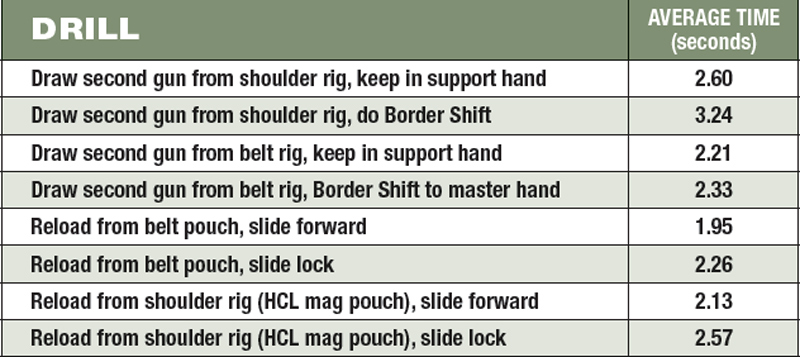
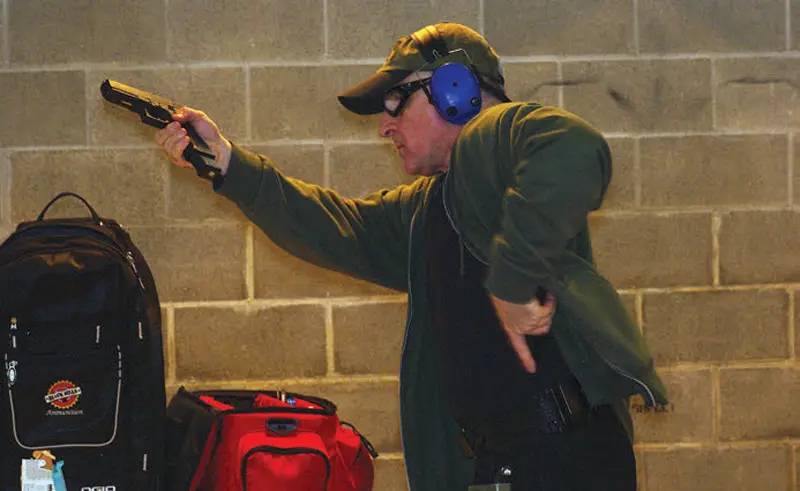
DRAWS
How does the New York Reload from a double shoulder rig compare to simply reloading the gun from a belt pouch? If I did a slide forward speedload, drawing from the shoulder rig and keeping the gun in the left hand to fi re added about two-thirds of a second versus reloading from the belt.
However if I had to speedload from slide lock, the so-called “emergency reload,” the differential was only about one-third of a second. Suddenly the double shoulder rig system started to look interesting.
Drawing a second gun from the shoulder rig and doing a Border Shift over to my right hand to fire in my standard two-handed hold versus simply speedloading from the belt with the slide forward added 1.29 seconds. New York Reloading from the shoulder holster was still about a second slower than reloading from the belt even if I shot the gun to slide lock first.
So, while the Galco double shoulder rig is still a very interesting concept, drawing a second loaded gun from a double shoulder rig (if you want to fire from your standard two-handed grip) is not nearly as fast as simply reloading the gun already in your hand from a belt pouch. This is if you’ve had a fair amount of speedload practice.
What I was wondering about the most was how did speedloading the gun from the belt compare to simply carrying a second gun on the weak side in a mirror-image belt holster?
Not at all badly.
Let’s assume the reason we’d want to do a New York Reload is because we’ve shot our main gun dry or it has stopped working—another big reason to carry two guns. Drawing the second gun from an off side belt holster and continuing to fi re one-hand only was slightly faster than speedloading from slide lock.
Having said that, fi ring the gun one-hand only with the less dexterous hand—while it might be great from the standpoint of first-shot speed and is definitely something to have in your bag of tricks—is less desirable from the standpoints of accuracy and follow-up, shot-to-shot speed compared to Border Shifting the gun to the strong hand and using your standard two-handed hold.
Finally we come to the two techniques I wanted most to compare: New York Reloading from the belt/Border Shifting the gun into my normal twohanded hold versus belt reloading from slide lock. New York Reloading/Border Shifting was only .07 (yes, that’s seven/ one-hundredths of a second) slower than slide lock reloading from the belt.
I was rather surprised how natural, smooth and fast dumping the main gun while drawing the second gun with my left hand, Border Shifting over to my right hand and continuing to fi re began to feel with only a small amount of livefire practice.
While I have had quite a bit of practice shifting a gun from hand to hand on the draw in the past, it has almost always been drawing the gun with the right hand and transitioning it to the left hand, not the other way around. I was amazed how easily and well that muscle memory transitioned (pun intended) to doing the same thing mirror image.
Now, if I do a slide forward speedload from a belt pouch, I can get the gun back up and fi ring in a little over onethird of a second faster than the New York Reload/Border Shift. With some more dedicated practice, I might make my left-to-right New York Reload/Border Shift just as fast as my slide forward speedload. If you think about it, the path of the movements is pretty much the same.
FINAL ASSESSMENTS
Looking over all this info, it might be argued that, in the age of the auto-pistol, the New York Reload is not the great time saver it was in the age of the revolver. These days we can speedload our guns just as fast as we can grab a second fully loaded spare. While doing a good slide lock speedload requires quite a bit of practice, so does doing a fast, safe Border Shift, so that’s a wash.
The double shoulder rig system proved to be the fascinating concept I always thought it would be. The HCL mag pouch takes the idea of reloading a handgun from a shoulder rig during a gunfight into the realm of possibility— certainly when compared to the traditional upside-down snapped-and-flapped system.
If I decided to carry in a shoulder rig, the Galco Original Jackass Rig/HCL mag pouch combo is what I’d use. And I came away from this testing quite impressed with the belt holster/New York Reload/Border Shift technique.
Even in the age of the auto-pistol, it’s an approach worth respectful consideration.
